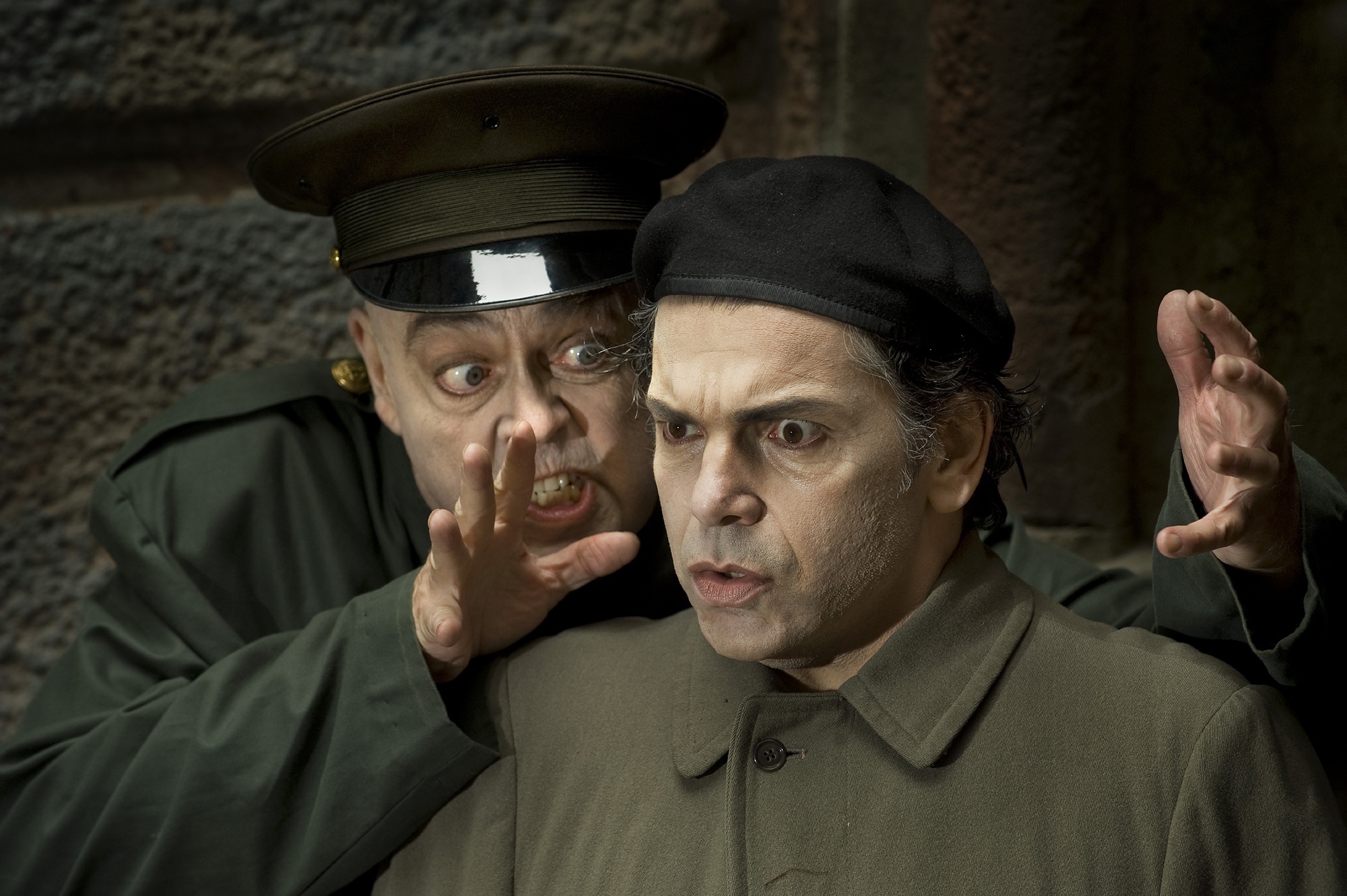
Darkness unto death …
Startling and emotionally complex, the music of Alban Berg’s Wozzeck weaves through the story of Franz Wozzeck, threading his mad and despairing visions with rich instrumental color. This past week Ensemble Parallele, the professional chamber orchestra directed by the indefatigable and artistically daring Nicole Paiement, presented this early-20th-century opera at Yerba Buena’s Novellus Theater in an intelligent and dramatic production.
Berg based the opera on the story of an unemployed barber and soldier, Johann Christian Woyzeck, who murdered one of his lovers and was executed for the crime despite his appeal based on diminished responsibility. In 1824 it was one of the first cases to consider insanity as a legal plea for mitigating a death sentence, and it provoked widespread medical and legal interest. Woyzeck’s appeals failed, and he was put to death.
Berg used this dark story, adapting an unfinished play by Georg Büchner, to reach into emotional areas not often touched upon in opera previously; although the idea of love as a form of madness or as a force able to inflict madness was not foreign to the genre, the view of the world as existentially amoral and chaotic was. The opera, which is divided into three acts of five scenes, shifts restlessly among the characters’ emotional states, all of which partake of illusion and delusion. Wozzeck’s strange and persecuting hallucinations (“There’s a curse on this place. See that bright streak over the grass there, where the toadstools are sprouting? At dusk, there’s a head that rolls there”) interlace with his fellow worker Andres’ song (“There’s a hare runs by, asks if I’m a hunter”) and his lover Marie’s fervid religiosity and ominous imagery from childhood (she tells her child, “Maiden, close up! A gypsy will take you by the hand, away to gypsy land!”).
… giving birth to a new musical language
The original score was orchestrated for just over 100 instruments, with a marching band, a tavern quintet and an out-of-tune piano onstage. Ensemble Parallèle uses the 21-instrument re-orchestration that John Rea created in 1995 for the Nouvel Ensemble Moderne de Montréal. Except for the piano, the onstage bands join the orchestra in the pit. With its splashes of percussion, brooding strings, chaotic woodwind figurations and ethereal wispy celesta phrases, the Rea orchestration re-creates the dense multiple colorations of the original score while still allowing intimacy with this most psychological of operas.
The singers in this cast were excellent without exception, navigating the Sprechstimme with fluidity and an impressive range. Mezzo-soprano Patricia Green put in an exquisite performance as Marie; her rendering of the first-act lullaby was simply gorgeous. Tenors A. J. Glueckert and J. Raymond Meyers achieved fine characterizations as Wozzeck’s nemesis, the Drum Major, and his friend, Andres. But among so many wonderful singers, bass-baritone Bojan Knezevic shone like the fiery sun that obsesses Wozzeck, not only in the richness and beauty of his voice, skill and range but also in his excellent acting. It would be easy to overplay Wozzeck, but he never does. His Wozzeck is a man listening to and being driven to desperation by his inner voices even while trying to function in a cruel world that is unrelenting in its own demented forms of persecution.
Like the Ensemble Parallèle’s excellent production of Lou Harrison’s Young Caesar, this Wozzeck has director Brian Stauffenbiel providing an imaginative and insightful visual concept for the staging. Behind two movable “flats” that variously act as interior and exterior walls are projected black-and-white films that are redolent of silent movies with their grainy imagery and that infuse the action with an impressionistic somberness. The projections were developed in collaboration with media artist Austin Forbord.
Some of the films were created in real time. In the opening scene, Wozzeck is cutting the hair of the Captain, Herr Hauptmann, sung by John Duykers, who chastises the barber for his immorality and for “thinking too much.” Throughout the scene, Duykers’ vivid face is projected as a huge grotesque head behind the two men, revealing how the humble and psychologically unstable Wozzeck emotionally perceives Hauptmann’s onslaught. This treatment is used in the similar scene between Wozzeck and the Doctor, sung by the admirable bass-baritone Phillip Skinner, who is interested in Wozzeck only as a medical specimen.
In the last interlude, Wozzeck, who has stabbed Marie for her unfaithfulness, drowns himself in a pond. The film of his descent through water into death coincides with the opera’s most dramatic music, which weaves the opera’s musical strands into a mesmerizing conclusion.
It was great to hear and see this opera in such an excellent production, proving once again that we are truly blessed in the Bay Area.
—Jaime Robles
Originally appeared in the Piedmont Post
Photo: John Duykers as the Captain and Bojan Knezevic as Wozzeck. Steve DiBartolomeo, photographer.
